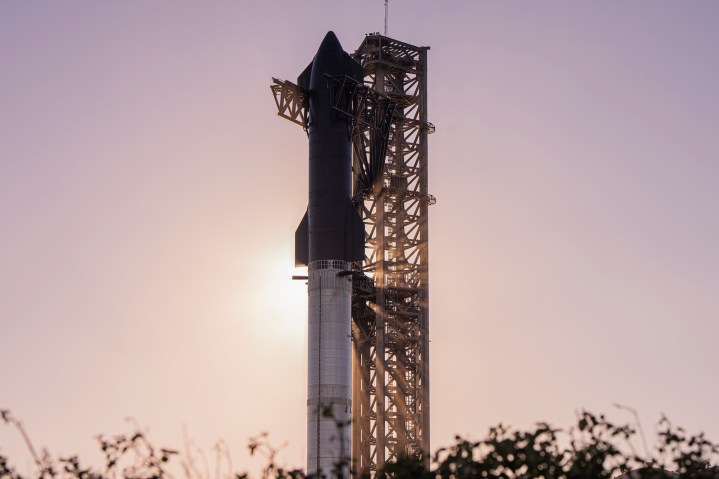
SpaceX is making final preparations to send the Starship to orbit on in what will be only the second test flight of the 400-foot-tall rocket.
The company had originally hoped to launch on Friday but has had to carry out some extra work that’s caused a 24-hour delay.
The uncrewed test flight of the Starship, which comprises the Super Heavy booster and Starship spacecraft, is now scheduled to get underway from SpaceX’s Starbase facility in Boca Chica, Texas, on Saturday.
A two-hour window for launch opens at 7 a.m. local time (8 a.m. ET/5 a.m. PT).
Calm conditions are needed for the launch and the current forecast suggests everything will be just fine. Patchy clouds and a light breeze are expected, which means mission operators can put their full focus on launch procedures.
The forecast is also good news for folks watching the spectacle in person or online via the live stream, as they will have a clear view of the most powerful rocket ever to fly as it climbs skyward.
The first-stage Super Heavy rocket will come down in the Gulf of Mexico soon after launch, but the Starship spacecraft should continue on to orbit before splashing down off the coast of Hawaii. If all goes to plan, the entire mission will last about two hours.
The first test flight of the Starship took place in April but ended in failure. The rocket cleared the launchpad but a few minutes after launch an anomaly occurred that prompted the mission team to destroy the vehicle in midair.
This time SpaceX will be keen to see the spacecraft reach orbit for the first time, a crucial step in its development process if the vehicle is ever to be used for crewed missions to the moon, Mars, and beyond.
With the weather looking fine, the team will now be hoping to steer clear of any technical issues that could delay the launch. If you’re thinking of watching the rocket blast off, be sure to check SpaceX’s social feeds for the latest mission status.
Editors' Recommendations
- SpaceX’s Falcon 9 rocket just completed a milestone mission
- SpaceX all set for a record-breaking rocket launch on Friday
- SpaceX shares stunning night shot of its Super Heavy booster
- SpaceX already has a date in mind for next Starship launch
- Take a high-speed ride on SpaceX’s emergency escape chute


